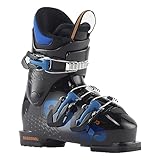Best set of ski boots UK
Which is the best set of ski boots in 2025?
VIEW OFFERBest of 2025: Find the right set of ski boots in the UK
Finding the best ski boots is probably the most important thing about completing your ski equipment. It is the main thing that keeps you comfortable and safe when skiing, so it is crucial that you find a good fitting. However, knowing what to look for when you are buying ski boots is not that easy, which is where this handy buying guide is here to help. With the tips and advice below, you will be able to find the perfect ski boots.
The 10 best ski boots in the UK (January 2025)
The bestseller list compares ski boots from multiple brands
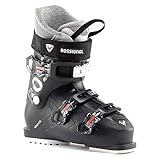
- Warmth: Insulation is key for comfort in cold conditions.
- Flex: Choose flex that suits your skiing style.
- Fit: Ensure boots match foot shape and size.
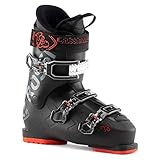
- Performance: Tailored to intermediate level for all-mountain versatility.
- Fit: Proper sizing prevents foot pain and enhances control.
- Comfort: Ensures a snug fit for long hours of skiing.

- Compatibility: Matches all mountain style and collection requirements.
- Flex: Determines responsiveness and suitability for intermediate skill level.
- Fit: Ensures comfort and precision control for skiing performance.

- Compatibility: GripWalk soles enhance natural movement and ease of use (not included).
- Design: Shell design addresses common fitting problems for a comfortable fit.
- Fit: Comfortable fit booties with soft materials keep feet gathered and warm all day.
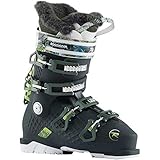
- *Warmth*: Thinsulate stretch technology insulates and supports for easier skiing.
- *Power*: Generative design grid technology enhances power while reducing weight.
- *Fit*: Slim, 100 mm width offering a balance between comfort and support.
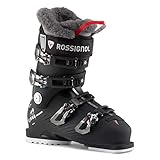
- Technology: Dual Core Technology boosts power transmission and livelier rebound responses.
- Design: Data-driven generative design reduces weight and enhances power transfer.
- Fit: Women's-specific slim fit ensures all-day comfort with a 100mm last.

- Size: Ensures accurate foot measurement and boot performance.
- Flex: Determines responsiveness and control on slopes.
- Fit: Ensures comfort and proper foot alignment.
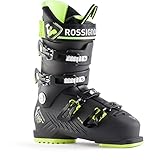
- Flexibility: Rear spine adjustment allows +5 to -5 flex range for customized performance.
- Weight: Data-driven design minimizes wall thickness for lighter boots and better power transfer.
- Fit: High-volume fit with a 102mm last accommodates various foot shapes comfortably.
Affiliate link: We are a participant of the Amazon Associates Program. If you buy a product through this link we might earn a small commission from Amazon at no extra charge for you. As an Amazon Associate we earn from qualifying purchases.
- Read the definitive set of ski boots buying guide
- View the set of ski boots picks and see how they rank in the top list
set of ski boots buying guide
Do you want to buy a good set of ski boots? This is all you need to know.
A short explanation: What are ski boots?
Ski boots are a set of four components that attach you to a ski. They consist of a tough outer shell, a thick inner lining, a clasp at the upper part of the shell, and a clasp at the back part of the shell. The boots are specifically designed to connect you to a ski, allowing you to move efficiently while skiing and providing a means to direct your on-slope efforts to a ski.
What are the benefits of good ski boots?
Skiing places a lot of stress on the body so it’s important to have the best ski boots possible that will help reduce the risk of injury. Similar to buying the best pair of golf shoes, the right set of ski boots can do wonders for your body and improve your overall performance. Whether you’re skiing for sport or recreation, a good set of ski boots will make your time on the snow much more enjoyable.
How to choose the best set of ski boots in 2025?
Choosing the best ski boots is usually a daunting prospect, especially for beginners buying their first set of boots. Here are some things to consider to make choosing good ski boots easier:
- Size: Ski boots need to fit properly for effective performance, so you should have them properly sized. This is made more complicated by ski boots not using the same sizing as trainers. There are other methods to find the right fit of ski boots, with one being to measure the feet and then convert this into centimetres, which is how ski boots sizes are measured.
- Socks: You will likely be wearing ski socks when using your ski boots, so it’s a good idea to have the boots fitted with socks not worn. This is because thicker ski socks can easily change the fit of the boots, so it’s a good idea to ensure there is enough room to accommodate them without feeling too constricted.
- Closure: Ski boots feature inner boots that fit into a hard, durable outer, and each part requires a respective form of closure. The closure style of the inner boot should feel nice and tight but with without being too constrictive, while also being easy to open and close. In a hardshell, think about whether a buckle or Velcro is more comfortable for you, and make sure it fastens securely. Toes should just about feather the end of the boots without much give. Meanwhile, the heel should remain in a flat position when fastened. The inner and heard shell should form a firm grip without pressure points.
Which types of ski boots are available to buy in the UK?
There are many different types of ski boots available, any of which may be best suited for your needs.
- Beginner Ski Boots: The best boots for beginners feature a lower cut design on the cuff for better forward flex, improving their ability to do a basic ski. They are also more commonly made from soft materials, which is another reason why they are recommended for first-timers.
- Intermediate Ski Boots: This type of skier has more control and balance on the skis so can comfortably wear a heavier, rigid boot. As they are likely to be trying out more advanced skiing, they may prefer a more advanced boot too, which includes a higher cut cuff for better support.
- Advanced Ski Boots: These ski boots offer improved features that cater to a more experienced skier. This includes a higher cuff for additional support and improved flex from rigid materials. They are often custom moulded for improved comfort and fit, which is recommended for skiers that hit the slopes several times a year.


